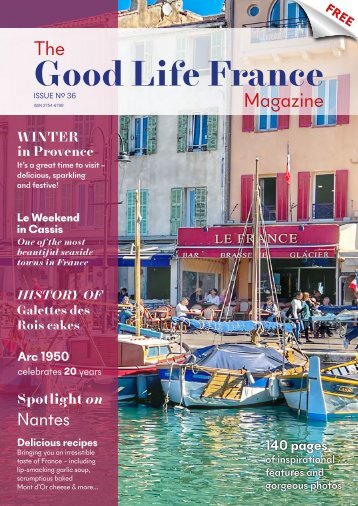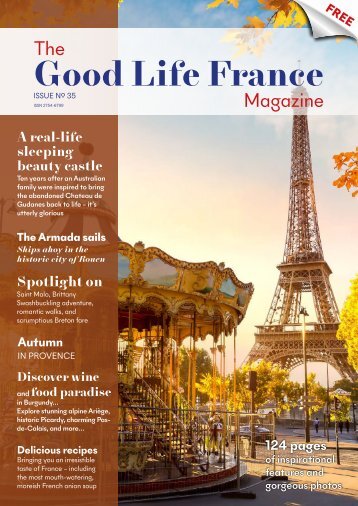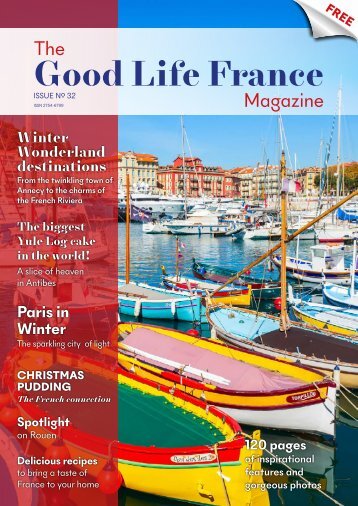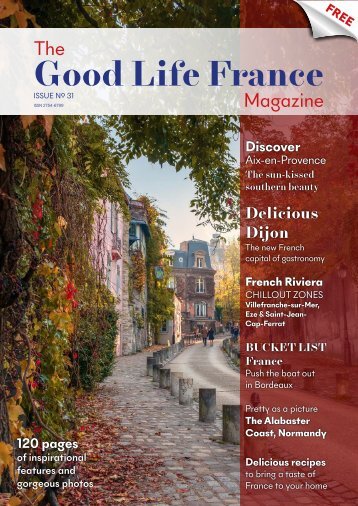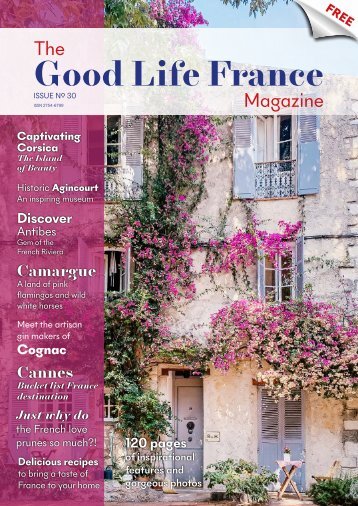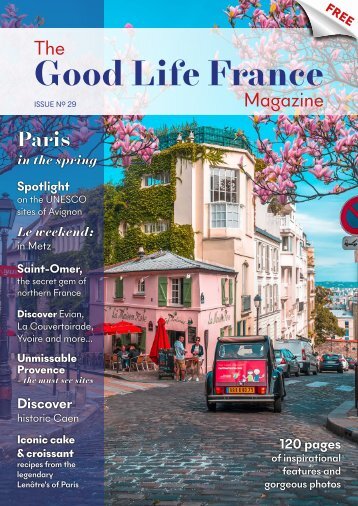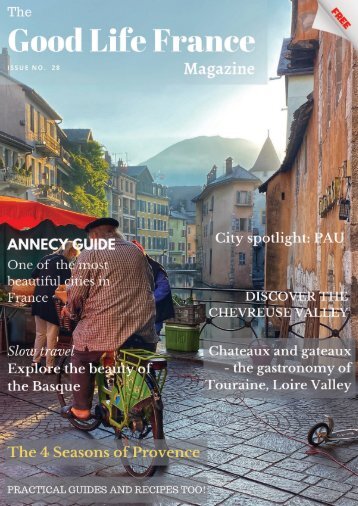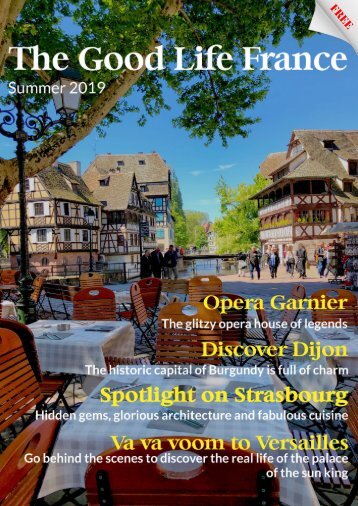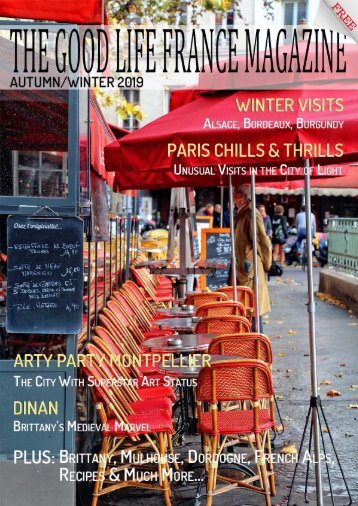
The Good Life France Magazine
The Good Life France Magazine brings you the best of France - inspirational and exclusive features, fabulous photos, mouth-watering recipes, tips, guides, ideas and much more...
Published by the award winning team at The Good Life France
Winter 2022
- Text
- Giveaways
- Recipes
- Christmas
- France
- Vineyards
- Villages
- Medieval
- Provence
LIMOUX, where the
LIMOUX, where the carnival goes with a fizz Colin Duncan Taylor goes to a historic carnival and sips the oldest sparkling wine in the world. The town of Limoux lies on the river Aude 25 kilometres upstream from Carcassonne in Aude, Occitanie. It has two claims to international fame: its sparkling wine and its carnival. The longest carnival in the world Venice may boast the oldest and Rio the largest, but Limoux claims to have the longest carnival in the world. Around 600 dancers belonging to 30 different troupes ensure that these festivities can be sustained three times a day, every weekend – plus Mardi Gras – from the end of January until early April. The Carnival of Limoux is unusually compact. Here, there are no carnival floats, no long parades. Events unfold in the intimacy of the medieval square with a graceful beauty which has been described as a miraculous combination of immobility and movement. Join them for a slow dance Each procession starts at one of the cafés on the square and continues to the next, and there are so many watering-holes beneath the arcades, the road is never a long one. Typically, the dancers advance around 40 metres in 20 minutes, so spectators have all the time in the world to take photographs and admire the masquerade. Two accessories are essential to the traditional carnival dancer’s performance. First the wand, around two metres long and made from reeds gathered on the Mediterranean coast just after the first frosts of January. Second, the confetti bag, coloured to match each dancer’s costume, and large enough to hold several kilograms of shredded paper. The birth of the carnival The carnival started in the 16th century when most wind or water mills around Limoux were worked by tenants. These millers had to pay their annual rent at the end of winter, and each year when they had settled their dues, they celebrated. Legend claims that when, in 1582, this celebration coincided with Mardi Gras, the millers paraded in the central square accompanied by oboes, fifes and drums. The Carnival of Limoux was born. Rowdy and sometimes violent These festivities sometimes turned violent. Take 1605, for example: there was a torchlit procession and joyful dancing beneath the arcades to the music of violin and drums, but then fighting broke out between rival factions, and some of the town’s consuls were roughed up in the melee. In the 18th century, the 74 | The Good Life France The Good Life France | 75
- Page 1 and 2:
FREE The Good Life France ISSUE N
- Page 4:
ISSN 2754-6799 To Subscribe to THE
- Page 8:
Winter WONDERLAND France Winter in
- Page 12:
In Thones: When it’s a full moon
- Page 16:
Kaysersberg, Lori Prosser Atlanta A
- Page 20:
Easy recipe for EARLY BOOKING DISCO
- Page 24: A very British Christmas Pudding Wi
- Page 28: To make a 1kg pudding for 8 INGREDI
- Page 32: Cascade du Ray Vallon Pont d'Arc Mo
- Page 36: Côtes du Rhône Jeremy Flint explo
- Page 40: Gorges Ardeche or wine shops seemin
- Page 44: Maclou, but twenty years on from my
- Page 48: THREE brilliant Lille brewers Brewb
- Page 52: the Porte de Barme, the Poterne and
- Page 56: Ossau-Iraty Urrugne Lourdes is nest
- Page 60: But step inside Pasteur’s front d
- Page 64: Sentier des Lanternes Bubbles Meanw
- Page 68: The white stone Basilica of Sacré-
- Page 72: 130 different plants and herbs, is
- Page 78: Switzerland - without depending on
- Page 82: Food writer and Toulouse local Ally
- Page 86: Finding Napoleon in Paris State of
- Page 90: Fabulous gifts that are perfect for
- Page 94: What’s New? Winter 2022 Les Deux
- Page 98: Inspiration for your travels to Fra
- Page 102: 8 Winter Feel Good Films to Watch a
- Page 106: striped shirt! Then there is Seurat
- Page 110: Your one stop shop for the finest q
- Page 114: Prep Time: 40 minutes Cook Time: 40
- Page 118: Last Word LOCAL KNOWLEDGE YOU CAN T
Inappropriate
Loading...
Mail this publication
Loading...
Embed
Loading...



